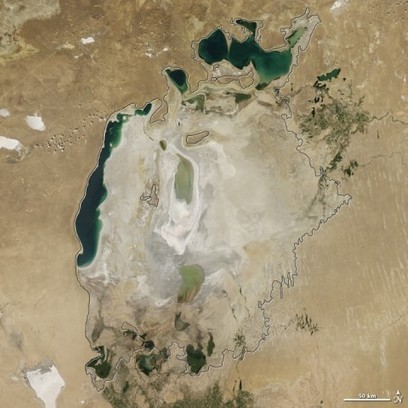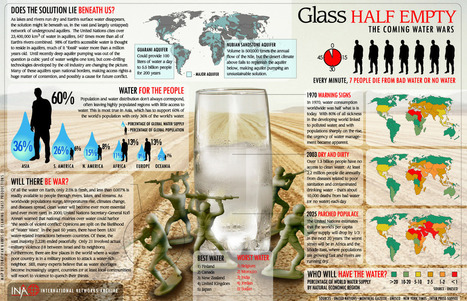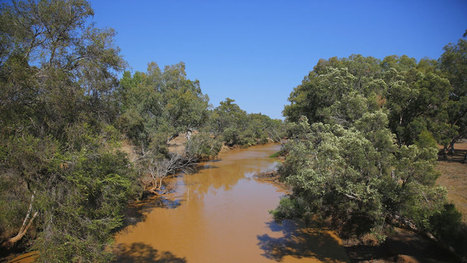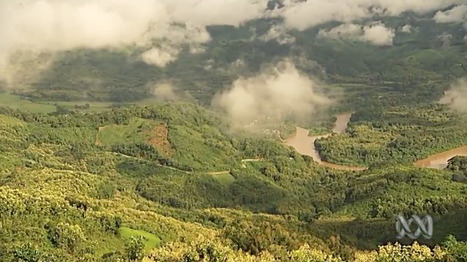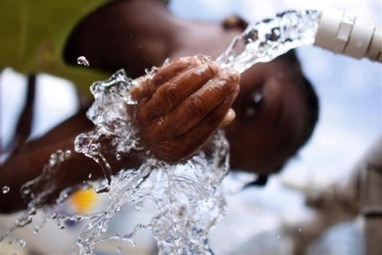Get Started for FREE
Sign up with Facebook Sign up with X
I don't have a Facebook or a X account
 Your new post is loading... Your new post is loading...
 Your new post is loading... Your new post is loading...

Alex Vielman's curator insight,
November 25, 2015 2:09 PM
Similar to the Aral Sea, the Tigris and Euphrates river basins have become drier and drier between 2003 and 2009. It is important to see all the aspects that have caused the rive to dry out and its do to there own people in this region. About 60 percent of the loss was attributed to the pumping of groundwater from underground reservoirs. Most of the problems are due to that about one-fifth of the water losses came from snowpack shrinking and soil drying up, partly in response to a 2007 drought. These could be some of the environmental issues but also there has been tremendous population increases in this region. This water is perfect drinking water for the people of South East Asia and the countries surrounding it but numbers are extremely high. It is important to analyze how us humans can change the geography of a certain area in such little time.
Adam Deneault's curator insight,
December 14, 2015 4:19 PM
The middle east has lost a huge portion of its freshwater over the past decade. The two natural-color images above were acquired by the Landsat satellites and show the shrinking of the Qadisiyah Reservoir in Iraq between September 7, 2006 and September 15, 2009. The first graph shows the elevation of the water in that reservoir between January 2003 and December 2009. The second graph shows water storage from January 2003 to December 2009. Obtaining ground data information in the middle east can be difficult.The researchers calculated that about one-fifth of the water losses in their Tigris-Euphrates study region came from snowpack shrinking and soil drying up, partly in response to a 2007 drought. 
Matt Danielson's curator insight,
October 31, 2018 12:05 PM
Pretty cool how they measure gravity levels along with satellite images to measure the amount of water. This continued trend of water lost will have dire effects in the future, especially in places like the middle east, India, South Africa, Mexico and many other regions. Here like in many regions the issue seems to be drought combined with over pumping of underground water (probably due to high population growth).

Seth Dixon's comment,
October 5, 2012 11:55 PM
My colleagues at the National Council for Geographic Education LOVE this link...many people have seen your work and it's impacted teachers all over the country.

Daniel LaLiberte's curator insight,
February 24, 2013 12:39 PM
I didn't know cotton farming was such a heavy water user. Reducing the water requirement helps, but using renewable energy to make more clean water could take care of the rest of the need.
However, we should probably develop more of the alternative natural fibers (http://www.naturalfibres2009.org/en/fibres/index.html), including Hemp, Flax, Coir, Jute, Ramie, and Sisal, and more plants that require processing (http://www.spin-knit-dye.com/natural-fibers.html) including rayons, viscose, bamboo, seaweed, soy, corn and tencel, as well as renewable animal coats including Llama, Alpaca (http://www.splitrockllamas.com/llama_and_alpaca_fiber.htm) Vicuna, Mohair, Angora, Camel, and Cashmere (http://info.fabrics.net/fabric-facts/wool/), and don't forget Silk (http://www.spin-knit-dye.com/silk-fiber.html). |

Lynn Leone's curator insight,
March 29, 2019 6:10 PM
If things like water issues aren't helped more people are going to be battling for those resources such as water. I can see many people dieing due to this in the coming years.

Jess Deady's curator insight,
April 30, 2014 8:36 PM
The Aral Sea Basin has been a topic of conversation throughout geography for many reasons. What used to be filled with water is now blowing dust because its that dry? This basin is no longer a natural resource.
Gene Gagne's curator insight,
November 18, 2015 3:30 PM
Here is a question. Do you think perhaps in the future this could happen to lake Mead in Nevada/Arizona? With all the non-stop building and no rain perhaps one day could it run dry or do we have a way to stop it.
Gene Gagne's curator insight,
December 1, 2015 7:17 PM
Once there is less water in a lake there is less water in the air therefore less rain. The long term consequences is that the fishing industry is destroyed where once upon a time there were 61000 workers and now there are under 2000. The water is more saltier. The lands are now ill suited and unbuildable. Also the people there are prone to health problems. |







